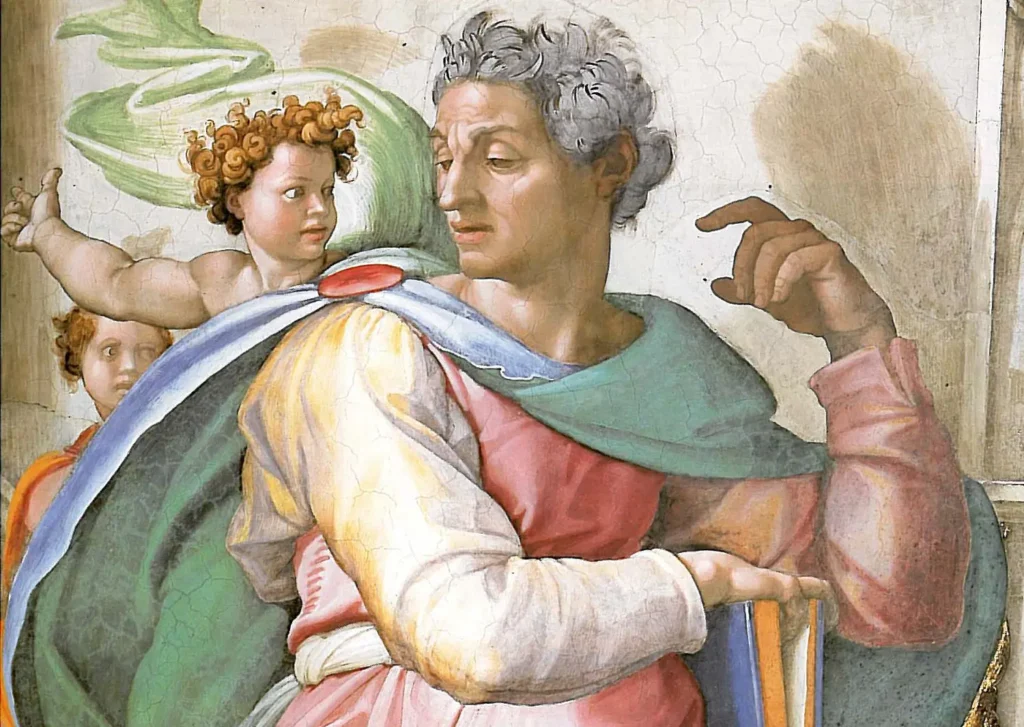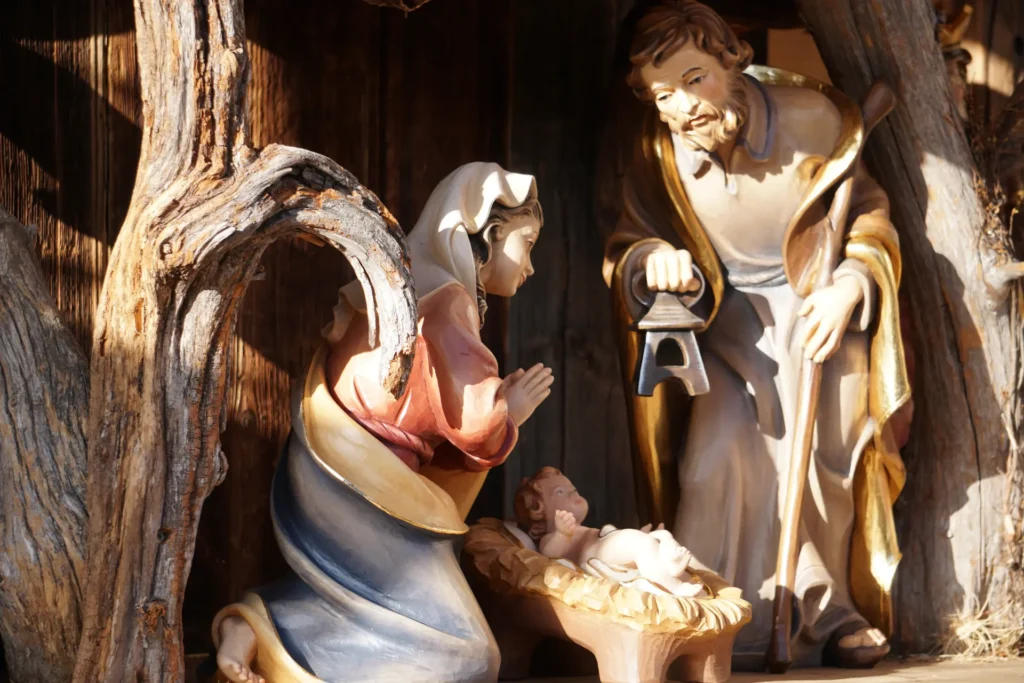I. Introduction
The story of Christmas is more than a heartwarming narrative about a young family and their special baby; it is a pivotal event bridging the Old and New Testaments of the Bible. This unity, often overlooked, is essential to understanding the full story of Jesus Christ that spans the entire Bible.
At the heart of this connection is Galatians 4:4-5, which says:
This passage links the prophecies and promises of the Old Testament with their fulfillment in the New Testament.
In these verses, the Apostle Paul encapsulates the essence of God’s plan unfolding through history. He points to the timing of Christ’s birth as part of a divine schedule, connecting the long-awaited Messiah of the Old Testament with the redemptive work of Jesus in the New. The Christmas story, therefore, is not just a New Testament revelation but a continuation and fulfillment of an ancient, divine promise.
Understanding this unity provides a deeper appreciation of the Christmas story and the entire biblical narrative, revealing the consistency and faithfulness of God’s plan for humanity.
II. The Significance of Galatians 4:4-5
Galatians 4:4-5 is a pivotal verse in the epistle to the Galatians as Paul explains that Jesus was born under the law and fulfilled its requirements perfectly. His life, death, and resurrection effectively redeemed those who were under the law and enabled them to become children of God through faith. While an unusual introduction to the Christmas story these verses provide a clear theological foundation, connecting the birth of Jesus Christ to God’s master plan as revealed throughout the Bible.
The verse states:
This scripture highlights two key aspects: the perfect timing of God and the fulfillment of His promise.
Firstly, “when the set time had fully come” speaks to God’s timing. It wasn’t a random or unplanned event; rather, it was a moment carefully chosen by God, following centuries of prophecy and preparation. So many things had to be right for the savior’s birth to occur. The world needed united under a common language, rulership and endowed with a vast transportation network as well as be in a state of general peace. Conditions Greek and then Roman rule provided.
Secondly, the verses emphasize the fulfillment of a long-standing promise. Jesus was sent, “born of a woman, born under the law,” fulfilling the prophecies of a Messiah who would come to redeem. This wasn’t just the birth of a remarkable individual; it was the arrival of the promised Savior, anticipated throughout the Old Testament.

In essence, Galatians 4:4-5 ties the Christmas narrative directly to God’s overarching story of redemption. It confirms that Jesus’ birth was the turning point in God’s redemptive plan, linking past prophecies with their fulfillment and showcasing God’s faithfulness across generations.
III. Prophecies Foretelling the Messiah
The Old Testament is rich with prophecies about the coming Messiah, setting the stage for the New Testament’s revelation of Jesus Christ. Two of the most significant prophecies are found in Isaiah and Micah.
Isaiah 7:14 foretold:
This prophecy, written centuries before Christ’s birth, speaks directly to the miraculous nature of Jesus’ conception and His divine identity. “Immanuel” means “God with us,” signifying that the Messiah would be God in human form and live among us.

Another prophecy in Micah 5:2 states:
This passage not only predicts the birthplace of Jesus but also highlights His eternal nature and His destined role as a ruler and the head of the linage of Juda.
These prophecies are crucial in understanding the New Testament revelation of Jesus. They set expectations for a divine, miraculous event and establish specific details about the Messiah’s birth and identity. When Jesus was born, fulfilling these prophecies, it authenticated His claim as the promised Messiah and solidified the unity between the Old and New Testaments. The fulfillment of these ancient predictions in the person of Jesus Christ is a cornerstone of Christian faith, demonstrating the continuity and reliability of God’s word across both Testaments.
IV. Fulfillment in the New Testament
The birth of Jesus Christ, as narrated in the Gospels, remarkably fulfills the Old Testament prophecies, showcasing God’s faithfulness and sovereignty.
Matthew 1:22-23 directly connects to the prophecy in Isaiah:
This verse in Matthew not only confirms the virgin birth of Jesus but also His divine nature, as foretold by Isaiah. The name ‘Immanuel’ is a profound testament to God’s promise to be present with His people.
Similarly, the fulfillment of Micah’s prophecy is evident in Luke 2:4-7. Luke writes,
This passage not only confirms Jesus’ birth in Bethlehem but also links Him to the lineage of David, fulfilling Micah’s prediction about the Messiah’s origin.
These fulfillments are not mere coincidences; they are significant indicators of God’s sovereignty in orchestrating history. God’s precise fulfillment of these prophecies in Jesus demonstrates His unwavering faithfulness to His word. It assures believers that God is in control and that His promises, no matter how long they take to materialize, are always true. This realization is fundamental to Christian faith, affirming that the events of the New Testament are a continuation and culmination of God’s redemptive plan laid out in the Old Testament.
V. The Role of Jesus in Uniting the Testaments
Jesus Christ plays a central role in uniting the Old and New Testaments, bridging the covenants and fulfilling the promises found in both.
- Fulfillment of the Law: Jesus declared in Matthew 5:17: “Do not think that I have come to abolish the Law or the Prophets; I have not come to abolish them but to fulfill them.” His life and teachings were not a departure from the Old Testament but a fulfillment. He lived in perfect accordance with the Law, bringing its deeper meaning to light.
- Embodiment of Prophecies: Jesus’ birth, ministry, death, and resurrection fulfilled numerous Old Testament prophecies. For instance, Isaiah 53 vividly describes the suffering servant, a passage widely accepted as a prophecy about Christ’s sacrificial death for humanity’s sins. Similar prophesies are found in Psalms 22.
- Establishment of the New Covenant: Through His death and resurrection, Jesus established a new covenant, as prophesied in Jeremiah 31:31-34. This new covenant, marked by grace and forgiveness, fulfills and transcends the old covenant of law, creating a direct, personal relationship between God and believers. In Matthew 26:28, Jesus says, “This is my blood of the covenant, which is poured out for many for the forgiveness of sins.”
- Teachings That Connect Covenants: Jesus’ teachings often referenced and illuminated Old Testament scriptures. He used these texts to reveal truths about God’s kingdom and His plan for salvation, as seen in His frequent use of passages from the Psalms and the Prophets during His ministry.
- Model of Perfect Obedience: Jesus serves as the perfect model of obedience to God, as exemplified in Philippians 2:8: “And being found in appearance as a man, he humbled himself by becoming obedient to death—even death on a cross.” His life exemplifies the obedience that the Law aimed to instill but that was fully achieved only in Him.
- Bridge Between Promises and Fulfillment: In Jesus, the promises of the Old Testament find their fulfillment. He is the promised Messiah, the ultimate sacrifice, the eternal king, and the mediator of the new covenant, effectively linking the promises of the past with their realization in the present.

Jesus is central to the unity of the Testaments. His life and work fulfill the Old Testament and establish the foundations of the New, demonstrating the continuity and culmination of God’s redemptive plan through history.
VI. Practical Lessons for Believers
Understanding the unity of the Bible has practical implications for Christians today. Recognizing this cohesion between the Old and New Testaments can deepen faith and inform daily Christian practice.

- Consistency of God’s Character: The unity of Scripture showcases God’s unchanging nature. Hebrews 13:8 says, “Jesus Christ is the same yesterday and today and forever.” This consistency assures believers that the God they read about in the Old Testament is the same God they encounter in the New Testament and in their lives today.
- Trust in God’s Promises: The fulfillment of Old Testament prophecies in the New Testament reinforces the trustworthiness of God’s promises. As 2 Corinthians 1:20 states, “For no matter how many promises God has made, they are ‘Yes’ in Christ.” Believers can be confident that God will fulfill His promises in their lives.
- Comprehensive Understanding of Salvation: The unified narrative of the Bible provides a complete picture of God’s plan of salvation. From the fall of man to the redemption through Christ, understanding this continuum helps believers appreciate the depth of God’s love and the magnitude of salvation.
- Guidance for Living: The Bible, as a whole, offers guidance for living a life pleasing to God. The moral teachings in the Old Testament, coupled with the teachings of Jesus in the New Testament, provide a comprehensive guide for Christian conduct. In Matthew 22:37-40: Jesus summarizes the entire Law in just two commandments: “‘Love the Lord your God with all your heart and with all your soul and with all your mind.’ This is the first and greatest commandment. And the second is like it: ‘Love your neighbor as yourself.’ All the Law and the Prophets hang on these two commandments.”
- Appreciation for Biblical Prophecy: Recognizing fulfilled prophecies strengthens faith and heightens anticipation for future fulfillments. It encourages believers to look forward with hope, as described in Revelation 21:4, where God promises a future without pain, tears, or death.
- Unity in Diversity: Just as the Bible’s diverse books come together in unity, believers are called to unity despite their differences. Ephesians 4:3 urges, “Make every effort to keep the unity of the Spirit through the bond of peace.”
VII. Reflections on the Christmas Story
When viewed through the lens of the united Old and New Testaments, the Christmas story gains a deeper and richer meaning. This perspective reveals the significance of Jesus’ birth as the culmination of God’s longstanding plan for humanity. Jesus’ birth marks the fulfillment of ancient prophecies and promises, making Christmas not just a New Testament event but a historic moment foretold in the Old Testament, particularly in passages like Isaiah 9:6. This story showcases the consistency and faithfulness of God’s plan, stretching from Genesis to Revelation, as seen in the fulfillment of these promises with the birth of Christ.
More than a quaint nativity scene, the story of Jesus’ birth represents the depth of God’s love and His willingness to enter the world in humility, echoing the sentiment of John 3:16. This story is also a celebration of God’s sovereignty over history, with the events leading up to Jesus’ birth, including the journey to Bethlehem and the virgin birth, demonstrating God’s meticulous planning in His redemptive narrative.
Believers are encouraged to delve deeper into the Scriptures during this season, exploring the connections between the Old and New Testaments. This understanding fosters a richer appreciation for the Christmas story within the broader biblical narrative. Finally, the story of Jesus’ birth serves as an inspiration for living a life of faith and obedience. Just as the prophecies were fulfilled in Jesus, believers are encouraged to trust in God’s promises and live by His word. Reflecting on the Christmas story, in light of the unity of the Testaments, allows believers to grasp the deeper significance of this event, celebrating not just a moment in time, but the entire narrative of God’s redemptive work.

The scriptures, from Genesis to Revelation, reveal a consistent and faithful God, working through history to bring about our salvation. This understanding deepens our appreciation of Christmas, transforming it from a seasonal celebration to a profound reflection on God’s unwavering faithfulness and love.
As we celebrate Christmas, let us remember it as a fulfillment of God’s promises. In the humble birth of Jesus in Bethlehem, we see the culmination of centuries of prophecy and the dawning of hope for all humanity. This season, let us embrace the full story of God’s work, allowing it to inspire and guide us in our faith journey.
In closing, remember 2 Timothy 3:16-17:
The Christmas story, set within the grand narrative of the Bible, equips us to understand and appreciate the magnitude of what God has done for us through Jesus Christ.




